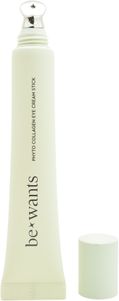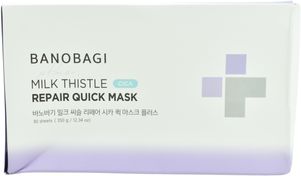What is K-Beauty?
K-Beauty, short for Korean Beauty, refers to the skincare and cosmetic products and trends originating from South Korea. It has gained significant popularity in the APAC region, expanding its influence globally as well. This is due to several key factors, such as:
- effectiveness,
- innovation,
- and affordability.
Korean skincare and beauty have emerged as trend setters in the beauty and personal care industry, influenced by South Korean pop culture.
In this article, Mintel highlights the reasons for the continued popularity of K-Beauty trends, and what brands in the beauty and personal care industry at large can learn from the success of Korean skincare and cosmetics.
How big is the Korean beauty market?
The South Korean skincare market is projected to increase 2.5% from 2023. The facial care segment, which leads the K-Beauty skincare market, is expected to grow to KRW5.41 trillion in 2024, a significant increase compared to 2023.
Moreover, in Japan, Korean beauty imports in 2024 increased by a whopping 120.8% compared to the previous year, even surpassing beauty product imports from France.
Why is K-Beauty so popular?
1. K-Beauty trends win customers over through affordability
Korean beauty trends are trendsetters in the BPC industry at large, but particularly for Asian consumers. They are known for creating looks tailored to Asian faces and are appreciated for their affordability, which is crucial during times of global inflation. The ranking on the Japanese beauty review site @cosme mainly features brands that offer their products at a lower price point, such as VT, Innisfree, and ROM&ND.
The key to appeal to consumers is to balance the demand for affordability with the desire for trendy looks, but without falling short on efficacy and safety. Young consumers especially, seek affordable beauty products: 30% of Gen Z in India agree that there should be more affordable beauty products.
2. Interest in South Korean pop culture continues to fuel the popularity of the K-Beauty market
Social media analysis in India reveals that there have been 6.20 million posts in the last two years discussing K-Drama, K-Pop, and K-Beauty trends, predominantly among the age group of 19-24. This continued popularity in K-Pop throughout the APAC region influences consumers’ interest in Korean skincare and beauty products.
K-Culture’s influence is expanding through beauty, food, cinema, and other aspects, further triggered by Netflix K-Dramas ‘Crash Landing on You’ and ‘Itaewon Class’. Keeping up to date with this movement will be crucial for brands in the beauty industry, as it shows no signs of slowing down just yet. Local and overseas brands should look closer at K-Dramas and leverage a similar style to communicate with consumers, while offering ways to recreate the looks seen on screen.
Consumer Trends in the Korean Skincare Market
While J-Beauty (Japan) is often perceived as more professional and premium compared to C-Beauty (China) and K-Beauty brands, the Korean skincare market can still convince an APAC audience in terms of innovation, trends, and convenience.
Why is Korean skincare so advanced?
1. Leading the shift from anti-ageing to slow-ageing
Particularly noteworthy among K-Beauty trends is the rising interest in slow ageing with Millennials and Gen Z, who prioritise holistic approaches to wellbeing. It will be crucial to leverage this emerging trend and switch communication around ‘anti-ageing’ to ‘healthy skin-ageing’, as the awareness of preventive skincare for long-term skin health beyond mere anti-ageing continues to rise.
Product launches in K-Beauty skincare are reflecting this trend, as there has been a discernible rise in skincare product launches related to slow ageing.


For example, Be+Wants is a slow-ageing cosmetic brand that uses plant-based healing to bring beauty to ever-changing skin.
2. Tackling skin issues with Korean skincare
Compared to Mintel’s survey respondents in China and Japan, consumers in South Korea reported a higher prevalence of skin conditions such as spots/acne, allergic reactions, and dermatitis – Psoriasis was noted to affect over twice as many South Korean consumers compared to China and Japan. Thus, it’s crucial to understand the unique skincare needs of South Koreans, as well as consumers in other markets, and offer products that address them – and be sure to provide scientific validation.
43% of South Korean women aged 25-34 agree that an expert recommendation encourages them to buy a beauty product at full price.
Source: South Korean Skincare 2024: Consumer and Product Trends (client access only)
Driven by tightened budgets, consumers are increasingly seeking skincare products with proven benefits, prompting brands to prioritise demonstrating efficacy over merely making claims. The South Korean skincare market is poised to lead this shift due to its reputation for innovation and research-driven approaches.
3. K-Beauty skincare offers convenience
Across Asia, there is a strong demand for convenient skincare solutions, with consumers, particularly in South Korea, valuing quick and easy-to-use products. The rise in skincare launches marketed with time/speed claims in South Korea has increased, reflecting the convenience trend, as many are willing to pay more for skincare items that simplify their routines. Consequently, leading innovation to actively use emerging convenience claims, like ease of use and convenient packaging, will be essential for success in the Korean skincare market.
Almost 70% of South Koreans agree that they are prepared to pay more for things that make their life easier.
Source: South Korean Skincare 2024: Consumer and Product Trends (client access only)


Banobagi Milk Thistle Cica Repair Quick Mask is a daily face mask to calm skin, hydrate, boost radiance, and reduce redness. It includes hygienic tweezers to conveniently pick up the mask.
Consumers will expect to extend this convenience to more aspects of their daily routines.
Therefore, the focus on convenience in skincare aligns with the preferences of South Korean consumers. Brands offering quick, easy-to-use skincare solutions and multifunctional formulations will likely experience increased demand in this market as a result.
Similarly, in India, there is a growing interest in convenience claims, such as ease of use and the ability to refill products when users run out, inspired by other APAC markets like China, Japan, and South Korea. Overall, the focus on convenience aligns with consumer preferences across various Asian markets, driving demand for multifunctional and user-friendly skincare products.
K-Beauty Trends in Colour Cosmetics
Korean skincare aspects are influencing colour cosmetics
The rapid increase in anti-/slow-ageing claims in K-Beauty skincare are seeping over into the colour cosmetics segment of the Korean beauty market, with skin-beneficial foundation launches becoming the norm over the past year. Brands in the K-Beauty skincare will have to pay attention to the rapidly evolving ‘skinification’ trends.
Natural ingredients in the K-Beauty market
Natural ingredients help convey value to consumers because they’re associated with skin benefits and promise fewer use of harsh chemicals. Brands are leveraging herbal and botanical ingredients to align with consumer preferences for natural and ethical beauty products, as part of a broader movement towards ‘green beauty’.
Communicating ingredients, and putting them front and centre, will be crucial for brands to appeal to consumers, as just over 30% of South Koreans say that a beauty or grooming product made with natural ingredients is good value for money (client access only). This becomes even more important, considering the ‘skinification’ trend in makeup will only intensify, and consumers’ interest in beauty ingredients is expected to expand further in the colour cosmetics segment.
Colour cosmetics trends deriving from increased interest in naturalness in the K-Beauty market
South Korean consumers’ lip makeup preferences are constantly shifting. Social media data shows ‘matte’ and ‘red’ are declining keywords in the lipstick segment, while ‘tint’, ‘glow’, and ‘pink’ have been on the rise for the last two years. This shift can likely be traced back directly to the increasing demand for natural and dewy makeup looks.


Daisique Fruity Lip Jam is marketed as offering a rich gloss coating with vibrant, buildable colours that leaves lips looking healthier, fuller, and more lively.
As a result, the colour cosmetics segment in the Korean beauty market has seen a rapid increase in the launch of glowy tint products, in response to consumers’ growing demand for such formulas. In this rapidly growing market context, brands may need to go beyond glow claims to succeed. Brands will need to differentiate products by delivering claims such as long lasting, lightweight, and hydrating, as well as offering a wider range of shades to choose from.
Looking Ahead With Mintel
Based on Mintel’s insights, the interest in K-Pop, K-Culture, and subsequently in K-Beauty trends isn’t about to slow down anytime soon. It continues to be fuelled by the ongoing popularity of K-Culture.
Consumers across the APAC region, as well as globally, value K-Beauty skincare and other beauty products for their innovation, effectiveness, and affordability. While J-Beauty’s popularity is on the rise and benefits from a more professional and premium perception, the Korean beauty market profits from its association as an affordable trendsetter.
For more Beauty Market Research, discover all of Mintel’s beauty and personal care industry reports, or sign up to our Spotlight Newsletter below for fresh market insights delivered directly to your inbox!
24World Media does not take any responsibility of the information you see on this page. The content this page contains is from independent third-party content provider. If you have any concerns regarding the content, please free to write us here: contact@24worldmedia.com

